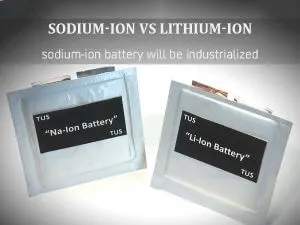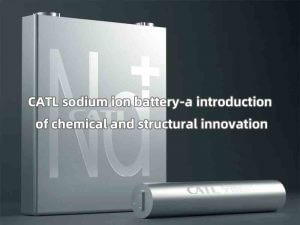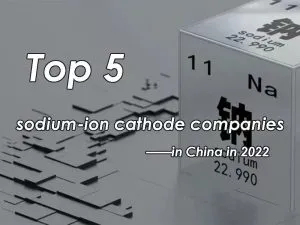Analysis of difficulties in sodium-ion batteries mass production

On the chemical periodic table, the sodium element is located directly below the lithium element, and the elements in such a positional relationship have similar properties. Moreover, sodium ions have a huge advantage, that is, the advantage of resource reserves. Obviously, the popularization of nano batteries can counteract the price increase of lithium mines. Are sodium batteries reliable? How long will it take for sodium batteries to go into mass production?
The development stage of sodium-ion battery
To make a sodium battery, we must first find a suitable sodium ion electrode material. However, the electrochemical performance of several materials (MoS2, TiS2 and NaxMO2) designed and developed in the early stage is not ideal. In contrast, lithium-ion battery materials have found several good materials (LCO, LFP and NCM) to develop rapidly, so the development of sodium batteries is very slow.
By 2010, the development of materials science has also brought new opportunities to sodium ion batteries. Combining the characteristics of sodium-ion batteries, a series of positive and anode materials have been developed, which have greatly improved capacity and cycle life. At this time, sodium-ion batteries began to receive widespread attention from the global academic and industrial circles, and its related research ushered in explosive growth.
However, sodium-ion batteries are still in the early stage of industrialization as a whole, and there is still a certain distance from mass production. At present, there are many companies in the world, such as: British FARADION, American Natron Energy, French Tiamat, Toyota, Panasonic, etc. China’s sodium ion battery manufacturers include: CATL, Sunwoda and other companies, which are making relevant layouts for the industrialization of sodium-ion batteries.
The development route and difficulties of sodium-ion batteries
● Cathode materials for sodium-ion batteries
There are three main types of cathode materials for sodium-ion batteries: oxides, polyanions, and Prussian blue. Each of the three routes has its own strengths:
● The preparation method of layered oxide system is simple, but its stability in air is poor.
● The polyanion system has good rate performance and cycle performance, but the conductivity is generally poor.
● Prussian blue compounds have good structural stability and rate performance, but there is a problem of processing complexity in the process.
At present, the maturity of the layered oxide method as a cathode material is relatively high, and it is expected to be the first to realize industrialization. The Prussian blue type has low cost, high specific capacity and energy density, excellent rate performance, and great potential in the future. However, sodium cyanide upstream of Prussian blue compounds is a hazardous chemical with high entry barriers.
● Anode materials for sodium ion batteries
Since the radius of sodium ions is much larger than that of lithium ions, graphite materials widely used in lithium batteries have poor sodium storage performance as anode materials. At present, amorphous carbon, which is the most promising anode material, will not be discussed for the time being. For raw materials, there are still challenges in material cost control, and the key problem is still in the early investment stage, which requires large-scale production.
Different from the lithium battery system, the cathode and anode of sodium-ion batteries and other material links have not yet been mass-produced and verified, and the matching has not yet entered the large-scale supply, and the cost of materials is difficult to control. The performance of materials related to sodium-ion batteries still needs to be further improved, and the current product level is similar to that of lithium batteries in 2013-2015.
● Manufacturing process of sodium-ion batteries
Because the chemical characteristics of sodium ions are very similar to those of lithium-ion batteries, sodium-ion batteries basically follow lithium-ion batteries in terms of appearance, structural design, production and packaging processes. The appearance is roughly divided into three categories: cylinder, pouch and square hard case. Therefore, the production of sodium-ion batteries can be directly adjusted on the existing lithium-ion battery production line, which also makes it possible to replace lithium batteries with mass production of sodium-ion batteries.
However, from the point of view of the manufacturing process, the mature technology, product quality stability, and yield rate of sodium-ion batteries still need time to be further improved to improve the key performance of sodium-ion batteries.
Time node of sodium ion battery industry
Compared with lithium-ion batteries, although sodium-ion batteries are still 7 or 8 years away from mass production, CATL, as a leading company in power battery companies in the world is already planning sodium-ion batteries. Putting the sodium electric material directly in the original battery cell can cover the following battery volumetric energy densities: 300-380Wh/L, 380-500Wh/L.
That is to say, with the existing Pack size, pure electric passenger cars can meet the needs of a battery life of less than 400 kilometers after being replaced with sodium-ion batteries. It can also continue to improve the energy density of the battery system through AB battery technology, lithium-sodium mix and match, and complementary advantages. It is expected to be extended to models with a battery life of 500 kilometers, covering about 65% of the car market.
Conclusion
Some professionals said that 2023 is still relatively difficult as the year when sodium-ion batteries explode. Although everyone has great expectations, objectively speaking, there are at least three difficulties in achieving mass production of sodium-ion batteries:
● Upstream material expansion needs a cycle.
● The production of sodium-ion batteries also needs to be verified step by step.
● Sodium-ion batteries need to be tested in winter and summer, and car companies need to accumulate more data.


























